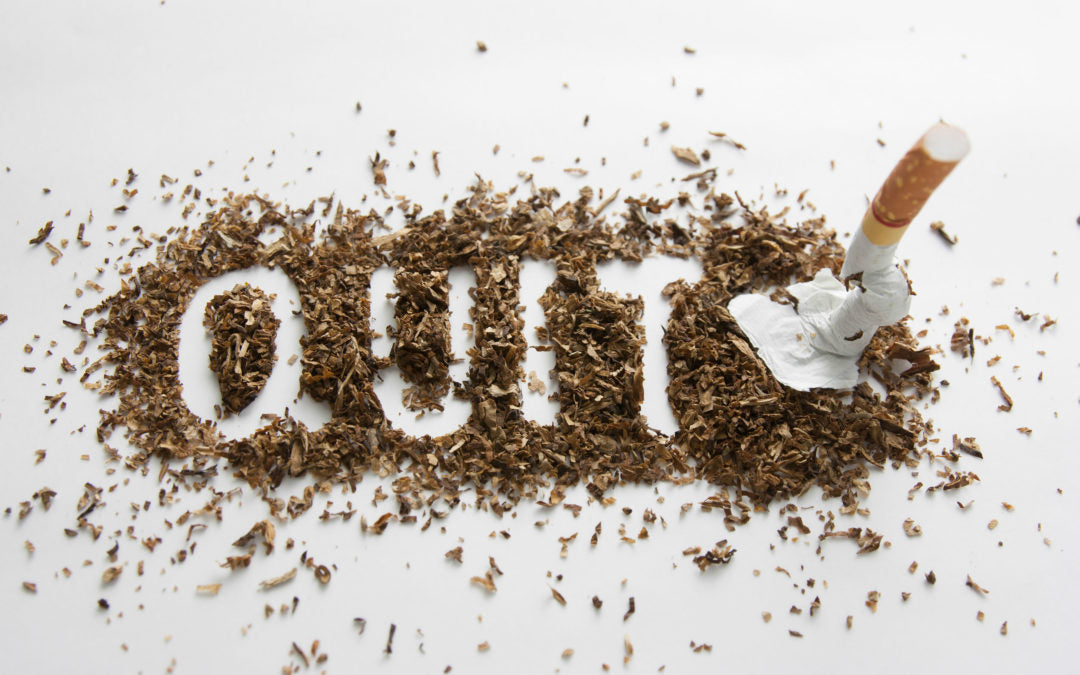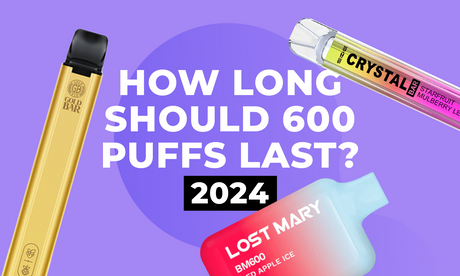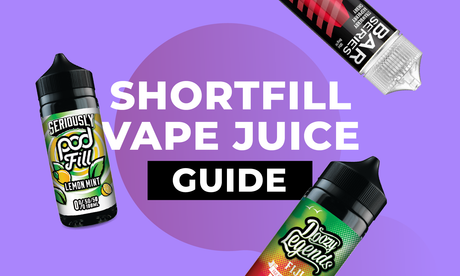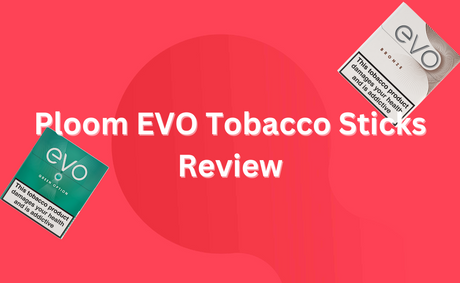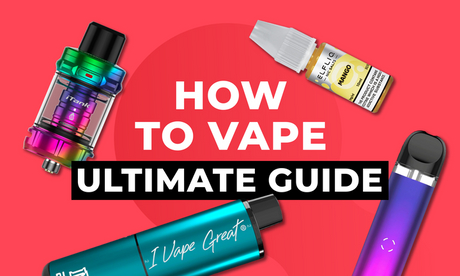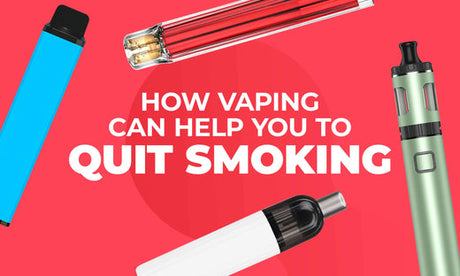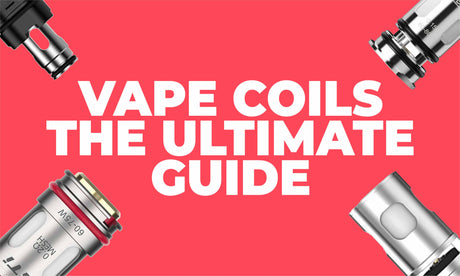Struggling with nicotine cravings? Looking to quit smoking? Well, you’re in the right place. In this guide we outline how to quit smoking and curb cravings.
The journey to quit smoking is frequently hampered by an intense and persistent desire to smoke. This need is a physical and psychological response to addiction, not just a habit. Nicotine, the addictive ingredient in cigarettes, causes dopamine to be released in the brain, resulting in pleasurable experiences. Over time, the brain equates smoking with pleasure and ease, resulting in a strong desire to smoke in reaction to various triggers such as stress, anxiety, social situations, or even specific times of day.
Every smoker's journey to quitting is unique and personal. The difficulties encountered are not only physical, but also emotional and psychological. The road is complicated by cultural expectations, shame, and personal fights fought in silence. This essay intends to be a complete guide, putting light on the many problems of quitting smoking and providing practical, actionable, and helpful strategies to overcome them and embrace a smoke-free life.
Contents
The Impact of Smoking
According to the World Health Organization, tobacco kills more than 8 million people each year. More than 7 million of those deaths are directly related to tobacco use, whereas around 1.2 million are nonsmokers exposed to secondhand smoke. These troubling numbers highlight the critical need for effective smoking cessation treatments. Despite the established health hazards, millions of people find it difficult to quit due to nicotine's addictive nature and a lack of accessible, effective support services.
Smoking is a global health issue, affecting populations in every corner of the world. It’s not just a health crisis but also a significant economic burden. The healthcare costs to treat smoking-related diseases and the lost human capital due to premature deaths and disabilities from smoking are staggering.

Strategies to Quit Smoking
NRT (Nicotine Replacement Therapy) is a popular and effective approach to quitting smoking, offering a lower dose of nicotine to ease withdrawal symptoms without the harmful chemicals found in cigarettes.
Here, we explore various NRT options and their effectiveness.
- Nicotine Patches: These are worn on the skin and deliver a steady, controlled amount of nicotine throughout the day.
- Nicotine Gum: It provides quick relief from intense cravings by releasing nicotine as you chew, offering both oral gratification and nicotine supply.
- Nicotine Lozenges: These are another option for immediate relief from cravings, dissolving in the mouth and releasing nicotine gradually.
- Nicotine Nasal Spray: These prescription options deliver nicotine through the nasal membrane or by inhalation.
- Vape Kits: These give you the option of gradually reducing your nicotine intake whilst remaining in control of your intake.
There are a multitude of different ways in which you can curb your cravings through nicotine replacement therapy, but each also comes with its own drawbacks.
Nicotine Patches don’t agree with everybody's skin type and can lead to irritating rashes, whilst nicotine gum and lozenges can be particularly unpleasant on the palette.
The best method we’ve found so far would be nicotine inhalation through either a dedicated Vape Kit or through Nicotine Inhalers - both of these simulate the act of smoking by lifting the device to your lips and inhaling, which is a familiar and comforting action for those attempting to quit smoking - they also give you the most control over your nicotine consumption.
If you’re interested in switching to vaping rather than smoking, we’d recommend either a Pod Vape Kit or Vape Starter Kit, as these are often the simplest and easiest vapes to help you quit smoking, which increases your chance of success.
However, if you’re looking for a way to stop smoking without continuing the use of nicotine, there are other methods that can help you quit, but the withdrawal symptoms may be more intense.
Behavioural Therapy
Behavioural therapy plays a pivotal role in addressing the psychological dependency on smoking. It involves working with a counsellor to identify triggers and develop coping strategies.
Individual Counselling: One-on-one sessions to delve deep into personalised strategies based on the individual’s smoking patterns and triggers.
Group Therapy: Sharing experiences and coping strategies with others on the same journey, fostering a sense of community and support.
Telephone Counselling: Accessible support over the phone, offering convenience and immediacy during craving episodes.
A multi-faceted approach often yields the best results. Combining NRT with behavioural counselling enhances the effectiveness of the quitting process.
Self-Help Resources
In addition to formal treatments, a plethora of self-help resources can augment the quitting process.
Quit Smoking Apps: Digital platforms offering tailored plans, progress tracking, and community support.
Educational Materials: Books, websites, and pamphlets providing insights and tips on navigating the quitting journey.
Creating a Quit Plan: A personalised quit plan is instrumental in navigating the quitting journey with focus and determination - it gives you a goal and time to mentally prepare yourself.

The Science Behind Nicotine Addiction
Nicotine is the most addictive component of tobacco; it is a potent stimulant that causes euphoria in the brain by releasing dopamine. This chemical contact is quick and powerful, resulting in a rapid addiction cycle. Each puff of a cigarette releases nicotine to the brain within seconds, producing a surge of dopamine and other neurotransmitters that elevate mood and induce calm.
Nicotine and the Brain
This pleasure, however, is short-lived. As the levels of dopamine drop, the craving for another cigarette ensues, leading to a vicious cycle of addiction. Over time, the brain develops a tolerance to nicotine, requiring higher doses to experience the same level of pleasure. This adaptation is at the core of the addiction and withdrawal process.
Withdrawal is a difficult foe on the road to quitting smoking. Because the brain becomes accustomed to regular nicotine consumption, the absence of this stimulant during the quitting phase causes a variety of physical and psychological withdrawal symptoms. Irritability, anxiety, depression, sleep difficulties, increased hunger, and cognitive deficits are among them.
The Physiological Impacts
Nicotine's physiological effects do not end with addiction and withdrawal. Almost every organ in the body is affected by smoking. It has been associated with a number of ailments, including heart disease, stroke, and cancer. Smoking exposes the body to more than 7,000 substances, including cyanide, benzene, formaldehyde, and methanol. Hundreds of these substances are hazardous, and roughly 70 of them are carcinogenic.
The Psychological Battle
The psychological side of smoking addiction is also intricate. The act of smoking is frequently entwined with everyday routines and activities, social contacts, and stress and anxiety coping techniques. This behavioural training compounds the addiction, making the road to recovery complex and difficult.
As we delve deeper, it’s crucial to understand the brain’s remarkable ability to adapt. While nicotine alters the brain’s chemistry, creating dependency, the brain is also capable of healing and recovery. Each hour, day, and week smoke-free allows the brain to repair and rebuild, reducing the intensity of cravings and withdrawal symptoms and restoring the balance of neurotransmitters.

Coping with Cravings
Understanding and identifying triggers is the first step in effectively managing cravings. Triggers are specific situations, emotions, or routines that increase the urge to smoke.
Stress, anxiety, depression, and even positive emotions like excitement can trigger cravings. Learning to identify the emotions that trigger these cravings and managing them is crucial for long term smoking cessation - it’s not easy, but it’s incredibly effective. However, this doesn;t mean that you should avoid feeling these emotions, but it’s easier to fight a craving when you’re aware of its trigger, so that you can plan ahead and develop healthy coping methods.
- Social Triggers: Being around other smokers or certain social settings can induce the urge to smoke. Developing strategies to navigate these situations is essential.
- Pattern Triggers: Certain daily routines or habits, like having a cigarette with coffee, can act as triggers. Changing these patterns is a vital aspect of managing cravings.
Delaying Techniques
Delaying the urge to smoke can be a powerful strategy. Cravings are time-bound and often diminish after a few minutes.
The 5-Minute Rule: When a craving hits, wait for 5 minutes. Engage in a distracting activity. This pause can often reduce the intensity of the craving.
Deep Breathing: Practice deep breathing exercises to calm the nervous system and reduce the urge to smoke.
Visual Imagery: Visualise the craving as a wave, peaking and then gradually subsiding. This mental imagery can be a powerful tool to ride out the craving.
Physical Activities
Physical activities can be a saviour during intense cravings, releasing endorphins and improving mood.
Short Walks: A quick walk can distract the mind and reduce the urge to smoke. It’s a double win, offering both mental and physical benefits.
Exercise Routines: Regular exercise can reduce the frequency and intensity of cravings. It also compensates for potential weight gain after quitting.
Hobbies: Engaging in physical hobbies like gardening or dancing can be both a distraction and a source of pleasure, reducing the need for the temporary pleasure from smoking.
Mental Health Focus
Your mental health is a key factor in your fight against withdrawal and cravings, so it’s important that you develop healthy practices that take care of both your physical and mental wellbeing, we’ve listed a few that have worked for us and many of our customers:
Mindfulness Meditation: It can help in managing anxiety and stress, reducing the intensity of emotional triggers.
Positive Affirmations: Using positive affirmations can rewire the brain’s thinking patterns, reducing the psychological dependency on cigarettes for emotional management.
Seeking Professional Help: For some, seeking help from a therapist or counsellor to manage emotional triggers can be beneficial.

Seeking Support
The role of family and friends in the journey to quit smoking is invaluable. These close connections offer a safety net of encouragement, understanding, and accountability. Loved ones can provide a listening ear during moments of vulnerability, celebrate the milestones achieved, and offer encouragement during the challenging phases of withdrawal and cravings. They can also play a pivotal role in helping to identify and avoid triggers, offering alternative coping mechanisms and distractions during intense cravings. The emotional and psychological support from family and friends amplifies the inner strength of individuals striving to quit, making the journey less isolating and more manageable.
Support Groups
Support groups and communities, both online and offline, offer a platform for shared experiences, insights, and encouragement. These groups bring together individuals on similar journeys, fostering a sense of community and mutual support. The power of shared experiences cannot be underestimated; knowing that others are facing similar challenges and overcoming them can be profoundly motivating.
Your Journey Starts with a Single Step
Starting the path to quit smoking is a laudable and transformational decision that marks the start of a healthier, healthier existence. It's a journey with its own set of trials and triumphs. Every day without smoking is a monument to the inner power and perseverance of people who choose health over addiction, life over the fleeting pleasure of smoking. The path, while personal, is not lonely. The combination of personal resolve, social support, and professional interventions builds a solid framework for success, with each hurdle solved bringing you one step closer to a life free of nicotine addiction.
As we conclude this comprehensive guide, we extend an invitation to embrace the journey with optimism, armed with the insights, strategies, and support outlined here.
Don’t forget, if you have any questions in regards to smoking cessation or switching to vapes as a form of NRT, you can contact one of our experienced experts at Grey Haze. Alternatively, feel free to check out one of our guides such as the best vapes for heavy smokers or the best way to successfully stop smoking - you’re in control of your destiny as you walk towards a smoke-free future, but we’re here to help.
